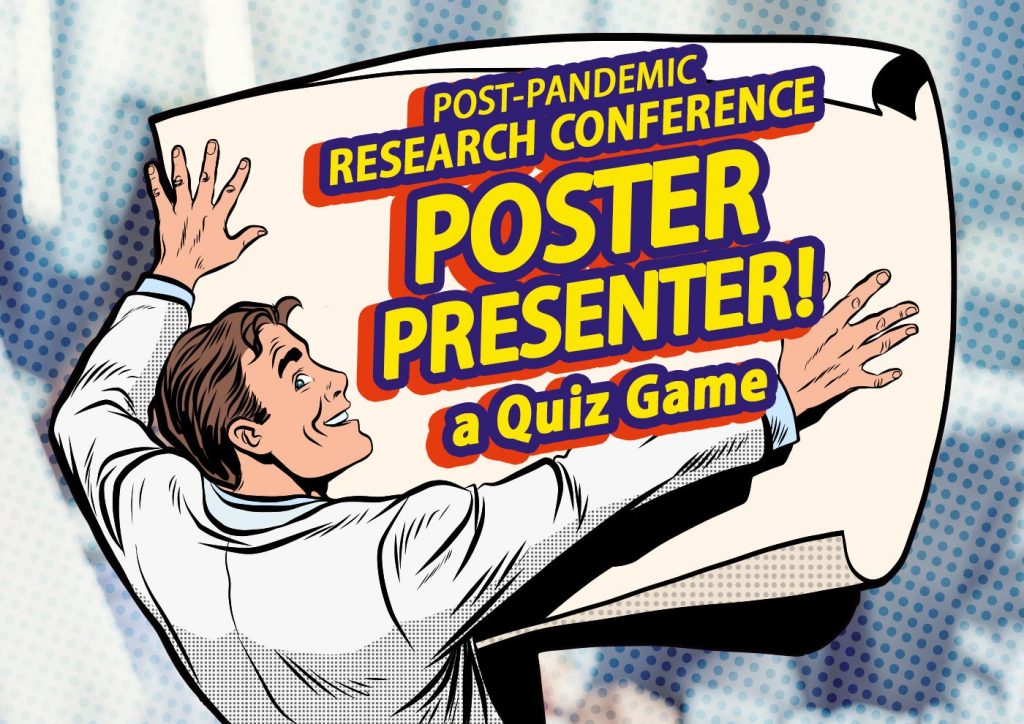How Much Do YOU Know
About Giving POSTER PRESENTATIONS?
Click the image to launch the quiz game!
Abstract
Conference presentations are a source of dread for many researchers, particularly for non-natives of English. Meanwhile the recent global pandemic has forced trainers to seek out effective online-only ways to offer researcher training. Game-based learning (GBL) is an effective, evidence-based approach to online training. Here we present the simple online mini-game “Poster Presenter!” which targets Phase 1 skills in Vitae RDF subdomains D2 (Communication and dissemination) and D3 (Engagement and impact).
Resources used
We have purposefully kept the game design very simple and built it with affordable, accessible online tools:
- Google Docs (for drafting questions)
- Adobe Stock (for images)
- Adobe Photoshop (for image editing)
- Kahoot! (for quiz-building and hosting)
Instructional design notes
Though the content is essentially “just” a quiz, certain elements have been lightly gamified for better engagement.
- The Kahoot! platform allows the game to be offered either as a solo self-assessment, or as a group activity. Having competitive elements can significantly improve engagement.
- Scoring depends not only on correctness but also response time. This encourages replay and thus further exposure/repetition.
Recommendations for further game development
- Here the 14 questions form one 7~8 minute quiz. An alternate approach might be to split the questions into three shorter sections that loosely form three stages of a linear narrative: “design”, “presentation” and “audience engagement”, which each section scored separately.
- The Kahoot! platform allows only basic linear quiz-types games. “True” game development is possible using more sophisticated slide-based design tools such as Adobe Captivate or Articulate Storyline
- Allowing the player to embody an avatar character can strengthen the narrative aspects of gameplay. Engagement improves even further if the player can customize the avatar.
- Branched (non-linear) scenarios are another effective way to build a more real-world type narrative structure. For example, if the player’s character chooses the wrong phrase to engage a passerby, the person continues walking away; whereas if the character chooses the correct phrase, then the person stays and the poster presentation part of the game begins.
- Slide presentations are another complex skill set that could be taught using a more complex game design. For example, the player could be presented with a replication of a Zoom screen, complete with buttons (“mute” etc.) that must be engaged at the correct time. (“Oops! You failed to unmute your questioner at the start of the Q&A session. Lose 10 points!” etc)
Your feedback and questions
We would be delighted to hear your questions and suggestions! Feel free to contact us from within the VitaeCon 2021 interface, or via this form.



